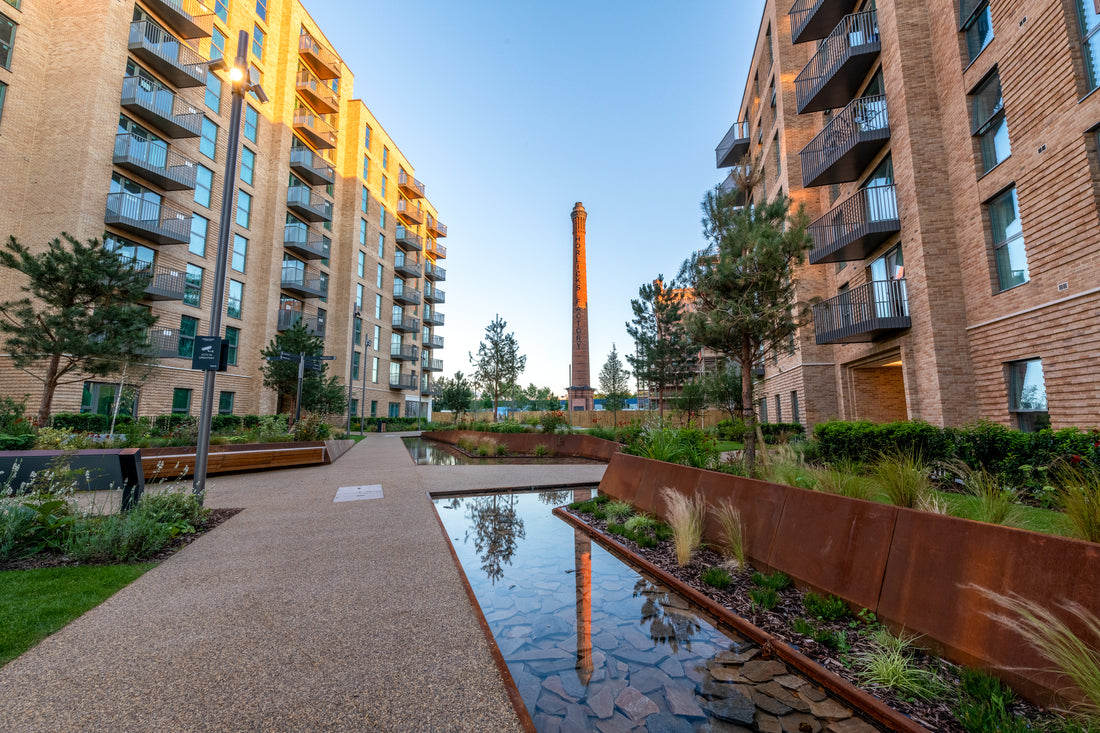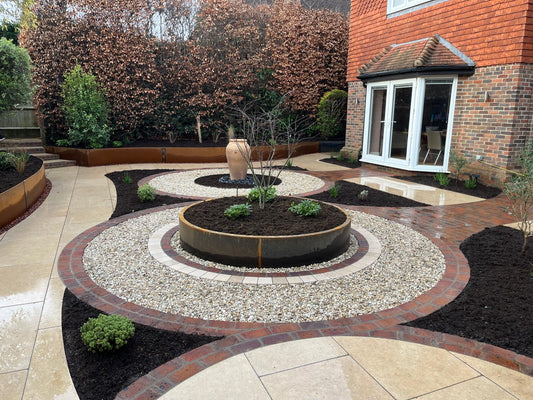
Corten vs Weathering-Steel: What’s the difference and does it matter?
Corten vs Weathering-Steel: Which is Better for My Garden Planter?

When designing a garden, the choice of materials can significantly impact both aesthetics and durability. Corten vs weathering-steel is a question that sometimes comes up. The rust-like patina is a popular choice for garden planters, but are they the same thing? Understanding their differences and similarities can help you make an informed decision.
What is Corten Steel?
Corten steel, also known as weathering steel, is a trademarked name for a specific type of steel developed by the U.S. Steel Corporation. Its full name is "Corrosion Resistant Steel." Corten steel is renowned for its ability to form a stable, rust-like appearance after exposure to weather. This unique rust layer, or patina, acts as a protective barrier against further corrosion.
The steel contains alloying elements such as copper, chromium, and nickel. These elements enhance its resistance to atmospheric corrosion and contribute to its distinctive weathered look. Unlike ordinary steel, Corten steel is designed to develop a protective oxide layer that prevents deeper rusting.
What is Weathering-Steel?
Weathering-steel is a broader term referring to a category of steel alloys that develop a protective oxide layer when exposed to the elements. This layer, often called a patina, protects the underlying metal from further rust and corrosion. Weathering-steel alloys are designed to improve resistance to atmospheric corrosion compared to standard carbon steel.
While Corten steel is a specific type of weathering-steel, not all weathering-steels are Corten. Weathering-steel includes a variety of formulations with different alloying elements and properties, all aimed at enhancing durability and reducing maintenance needs.
Key Differences Between Corten and Weathering-Steel
Though both Corten and weathering-steel have similar protective properties, they have key differences.
-
Composition:
- Corten Steel: Contains specific alloying elements like copper, chromium, and nickel. These elements enhance its ability to form a stable rust layer that protects the underlying steel.
- Weathering-Steel: Encompasses a wider range of alloys with varying compositions. While all weathering-steels form a protective oxide layer, the specific composition can affect the appearance and performance.
- Weathering:
- Visually distinguishing Corten Steel from other types of weathering-steel is difficult once both have developed their patina. Both materials form a rust-like protective layer that varies from orange-brown to dark brown over time. Corten tends to weather more uniformly, producing a smoother and slightly more vibrant patina due to its higher copper content. In contrast, generic weathering-steels may show more variation in texture and colour, sometimes weathering unevenly or appearing patchy.
-
Brand Name vs. General Term:
- Corten Steel: Is a trademarked brand name for a type of weathering-steel produced by U.S. Steel. It has a specific formulation and set of properties.
- Weathering-Steel: Is a general term for various steels that develop a protective oxide layer. It includes different formulations and brands, each with its unique characteristics.
-
Applications:
- Corten Steel: Often used in architectural and artistic applications, such as building facades, sculptures, and garden planters. Its weathered look is desirable for aesthetic reasons.
- Weathering-Steel: Used in a wide range of structural applications like bridges, buildings, and outdoor structures where durability and low maintenance are crucial.
Does it Matter Which One You Choose?
The choice between Corten and weathering-steel depends on your project's specific needs and preferences:
- Aesthetic Preferences: If you want the distinctive reddish-brown, weathered look of Corten steel, you'll need to choose Corten or a similar product designed to mimic its appearance. The patina of Corten steel provides a unique, attractive finish that many find appealing.
- Material Specifications: For structural applications requiring specific weathering properties, it's important to understand the exact composition of the steel. Knowing whether you're using Corten or another type of weathering-steel can affect the material's performance and longevity. Some projects might benefit from the specific characteristics of Corten steel, while others might find a different weathering-steel formulation more suitable.
Understanding Corten Steel Grades – Corten A vs. Corten B
Within the Corten family, two main grades are commonly used: Corten A and Corten B. Each grade has different properties and applications.
Corten Runoff: Why does it need consideration?
Corten steel (weathering steel) develops a rust-like appearance that forms a protective layer, making it ideal for outdoor use. However, during the initial weathering process, Corten steel can produce runoff, which may stain nearby surfaces like concrete, paving, or stone. Here's the three best ways to manage Corten run off:
Positioning and Placement
- Place on Gravel or Soil: Installing the Corten steel planter over a permeable surface like gravel or soil will mean any runoff will be absorbed.
- Avoid Direct Contact with stainable surfaces: Keep Corten steel away from porous materials like concrete or tiles, especially during its weathering phase.
Accelerating the Weathering Process
- Pre-Weathering: You can accelerate the weathering process by wetting the Corten steel and allowing it to dry repeatedly before installation. This can help reduce the amount of runoff after installation.
- Use a Rust Converter or Stabilizer: Applying a rust stabilizer can help control the corrosion process, reducing runoff over time.
Runoff drainage
- Drainage Strip Design - To manage runoff, leave a 10-20mm gap around the edge of your planter before laying the paving. This gap will act as a drainage strip, capturing any runoff and minimizing the risk of staining the surrounding paving.
- Lighting Feature - You can also incorporate a lighting strip in this recess to create an eye-catching feature, adding both functionality and style to the design.

In Summary
Corten vs weathering-steel: They are both excellent choices for garden planters and other outdoor applications. Corten steel is a specific type of weathering-steel with a distinctive rust-like appearance and a trademarked formulation. Weathering-steel is a broader category that includes various formulations designed to resist atmospheric corrosion. Both types of steel develop a protective oxide layer that prevents further rust and extends the material's lifespan.
The choice between Corten and other weathering-steels depends on your aesthetic preferences and project requirements. Corten steel is ideal if you want the classic, weathered look, while other weathering-steels might offer different properties suited to structural needs.
At GEO, we recommend Corten steel for its quality and consistency. Its unique appearance and reliable performance make it an excellent choice for both residential and commercial projects.



